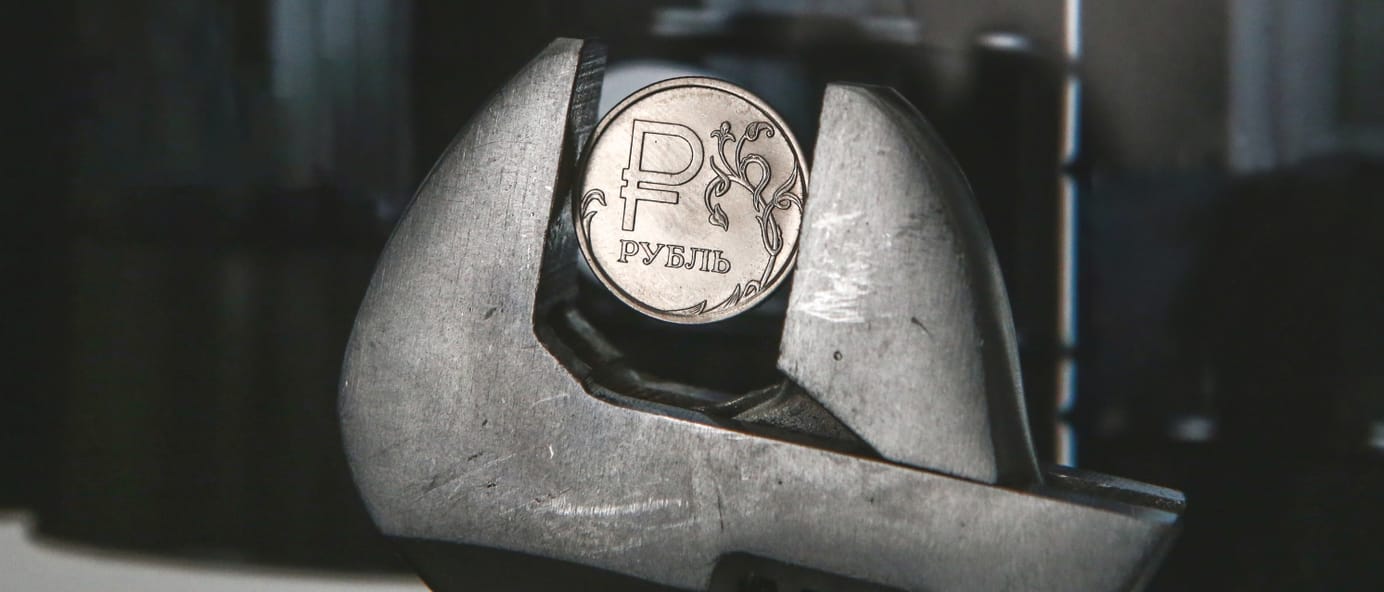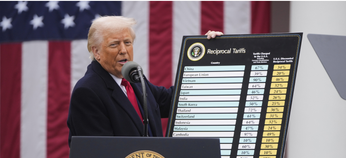
Russia’s rising stagflation threat
Hello! Welcome to your weekly guide to the Russian economy—written by Alexander Kolyandr and Alexandra Prokopenko and brought to you by The Bell. Our top story this week is the growing prospect that the Russian economy will enter a period of stagflation. We also look at a campaign by business leaders angry at high interest rates for curbs on the independence of the Central Bank.
Recrimination and finger-pointing as Russia heads for stagflation
The Russian economy is showing more and more signs that growth is slowing, and economists are beginning to talk more and more about stagflation – a combination of low growth and high inflation. As no-one can openly blame the Ukraine war, the Central Bank highlights “external factors,” while business leaders and government-connected economists blame the Central Bank for imposing record high interest rates.
What’s going on?
The Central Bank earlier this month published a report analyzing financial flows. The conclusion was that Russia is on the verge of an economic slowdown. In October, the volume of incoming payments via the Central Bank’s payment system (about half of all payments made in Russia) was down 2.9% compared with the third quarter average. This sort of decline was visible in all industries the Central Bank studied. The only exception was the consumer market, where payment volume growth continued (albeit at a slower rate than before). Data from the State Statistics Service (Rosstat) on industrial output in Russia from January through September (the most recent data) painted a similar picture.
The slowdown is not simply due to declining output in the raw material extraction industries (this has been ongoing for several months amid falling export prices), but also a stuttering manufacturing sector. The only place growth is still noticeable is in sectors linked to the military. Everywhere else in the economy growth is absent, or, at best, anemic.

All this data has prompted economists to revise downward their projections for Russian GDP growth. Predicted growth for next year is now about half the global level. In a commentary published earlier this month, the Central Bank said growth next year will slow to somewhere between 0.5% and 1.5%. In 2026, it’s expected to be below 2%.
In a report published Monday, economists from the Institute of Forecasting at Russia’s Academy of Science said that “slowing economic activity and deterioration of financial indicators are becoming increasingly evident in a number of sectors.” And Russia’s Center for Macroeconomic Analysis and Short-term Forecasting (CMASF) spoke openly in a report Wednesday about possible stagflation. The center (run by the brother of Defense Minister Andrei Belousov) flagged the risk of a recession and falling productivity, especially in low-profit sectors and industries with long project implementation timeframes.
Even officials have publicly commented on a fall in investment. Prime Minister Mikhail Mishustin said Thursday that, compared with the first half of the year when capital investment was up 10%, “we are [now] seeing a slight decrease in activity.”
Who’s to blame?
Economic growth and improved standards of living are topics Kremlin officials like to crow about. They apparently prove that Western sanctions have failed, and justify the wartime decision to opt for economic stimulus via military spending and import substitution.
Looking for reasons to explain why this is no longer the case has divided the key players in Russia’s economic scene. Unable – and unwilling – to blame the war in Ukraine, they are, instead, seeking other scapegoats. The Central Bank, for example, has blamed external factors (meaning sanctions and cheap oil) as the reasons for the slowdown, along with the economy reaching its limits and the ongoing labor shortage.
Industrialists, and economists aligned with the government, meanwhile, blame the Central Bank for keeping interest rates so high. CMASF stated that the risk of a slump is down to “the high level of the base rate and the prospects of further [interest rate] increases.” The center’s economists believe hiking the rate further will not curb inflation, but only increase the debt burden on business and make it impossible to lend to companies. In their analysis, economists at the Academy of Science made a similar argument. However, they noted that other costs were also rising – including wages, regulated tariffs, taxes and fees.
Even Mishushtin has blamed interest rates for reduced investment. He lamented recently that “savings are more profitable than investments.” At the same time, he demanded “closer coordination of the actions of all responsible executors, including the Economic Development Ministry, the Finance Ministry and the Bank of Russia.”
Why the world should care
An economic slowdown is a very serious problem during a period of high inflation. And, in modern Russia, it is impossible to treat it using Reaganite methods: slashing spending and reducing regulation to attract foreign investment. Cutting funding for the war and the defense sector is politically inconceivable in Russia at the moment. Even acknowledging that the war and sanctions triggered this cycle of overheating and decline is impossible. That means the Central Bank may well end up being held responsible.
Russian business leaders line up to attack Nabiullina
Executives at big Russian companies who are unhappy with interest rates at 21% have been angrily criticizing the Central Bank and its head, Elvira Nabiullina. Influential lobby group, the Russian Union of Industrialists and Entrepreneurs (RSPP), this week even suggested forcing the Central Bank to coordinate its monetary policy with the government.
- This is by no means the first time the Central Bank has been attacked by business leaders. Billionaire Oleg Deripaska, for example, is famous for complaining about interest rates. However, the chorus of criticism has been particularly strong in recent weeks. Owner of steelmaker Severstal, Alexei Mordashov, said last month that high rates limit business development, leading to an economic slowdown (that actually ends up boosting inflation). And the head of state-owned conglomerate Rostec, Sergei Chemezov said shortly after that interest rates were a “brake” on industrial development, warning they could even lead to a halt in arms exports.
- Business leaders have even started proposing legislative changes. At present, the Central Bank is only answerable to parliament. However, the RSPP wants the bank to work with the government when coordinating “the fundamental directions of monetary and credit policy.” The government, according to the RSPP, should check that these “comply with aims of socio-economic development and increased state sovereignty.” In other words, they want the Central Bank to amend its monetary policy according to the dictates of the government.
- Naturally, the Central Bank will oppose any attempt to limit its freedom of action. The regulator has responded to the RSPP, saying it already has constructive interactions with the government, and that broader economic goals cannot be achieved without an independent Central Bank.
- There is a broad consensus among politicians and economists across the world that an independent Central Bank is a prerequisite for a healthy economy. This is based on the belief that political pressure to lower rates will not bring growth, but just increase inflation over the long term. The textbook example of monetary policy easing taking place in the face of political pressure was the U.S. Federal Reserve’s 400 base point rate cut from 1970 through 1972. To remedy the situation, the regulator then almost doubled rates (after Nixon won the election), but it was too late: inflation reached 11% in 1974, and the U.S. economy fell into stagflation.
- A more recent warning of the consequences of stripping Central Bank’s of their independence comes from Turkey where President Recep Erdogan took personal control of the economy for several years. This led to inflation at more than 70% with an official Central Bank rate of 9% (and a negative real rate). As a result, Turkey has frittered away its reserves, and the currency is much weaker.
- Analysts questioned by business daily Vedomosti believe it is highly likely the Central Bank will, at the end of the day, see its independence curtailed. And it’s true that the current situation – war in Ukraine and Western sanctions – is unprecedented. However, in Russia’s authoritarian system, the final word rests with President Vladimir Putin, who has repeatedly given Nabiullina his personal support.
- Undoubtedly, interest rates of 21% are a big challenge for business. Among other things, they mean that putting your money in a savings account is more profitable than investing in a business. “The defense sector is barely paying contractors because it’s more profitable to put money in deposits. You can’t get a loan due to prohibitive rates. Everyone is angry,” a deputy director of one company told The Bell. The result is that businesses are tearing up their investment plans, according to Alexei Repik, chairman of the business association Delovaya Rossiya.
Why the world should care
Central Bank independence is one of the last barriers stopping the Russian economy from lurching into a full-blown crisis. With Putin apparently determined to continue the war in Ukraine regardless of the cost, that last line of defense could soon crumble.
Figures of the week
Russia recently reduced payments to soldiers injured in combat. Until now, that payment was a flat-rate of 3 million rubles ($29,999). For serious injuries, it will stay at 3 million rubles, but for minor injuries it will fall to 1 million rubles. Oddly, the official behind this idea was the recently-appointed Deputy Defense Minister Anna Tsivileva, Putin’s cousin.
Inflation ticked up the week starting November 6, according to Rosstat. Weekly inflation went up to 0.3% from 0.19%, while annual inflation climbed to 8.56% from 8.53%.
GDP growth in the third quarter was 3.1%, according to Rosstat, compared with 4.1% in the second quarter. The Economic Development Ministry previously estimated third quarter growth at 2.9%. Based on Rosstat’s estimate, GDP growth in Russia for the first nine months of this year should be 4.1%.
The threat of U.S. secondary sanctions continues to cause problems for Russian business. Kazakh banks are taking up to two months to check transactions involving Russia, outlet RBC reported Wednesday, citing executives and lawyers. In particular, banks are apparently demanding clients prove they have genuine business connections in Kazakhstan. And RBC reported Friday that the Bank of China was tightening controls over financial transfers involving all post-Soviet nations.



PAID SUBSCRIPTION LAUNCH
From May 1, 2025, The Bell in English will no longer be free
From May 1, 2025, all The Bell’s newsletters and online content will be behind a paywall. We have taken this decision so that The Bell can remain financially independent, and maintain our high standards of journalism and economic expertise






